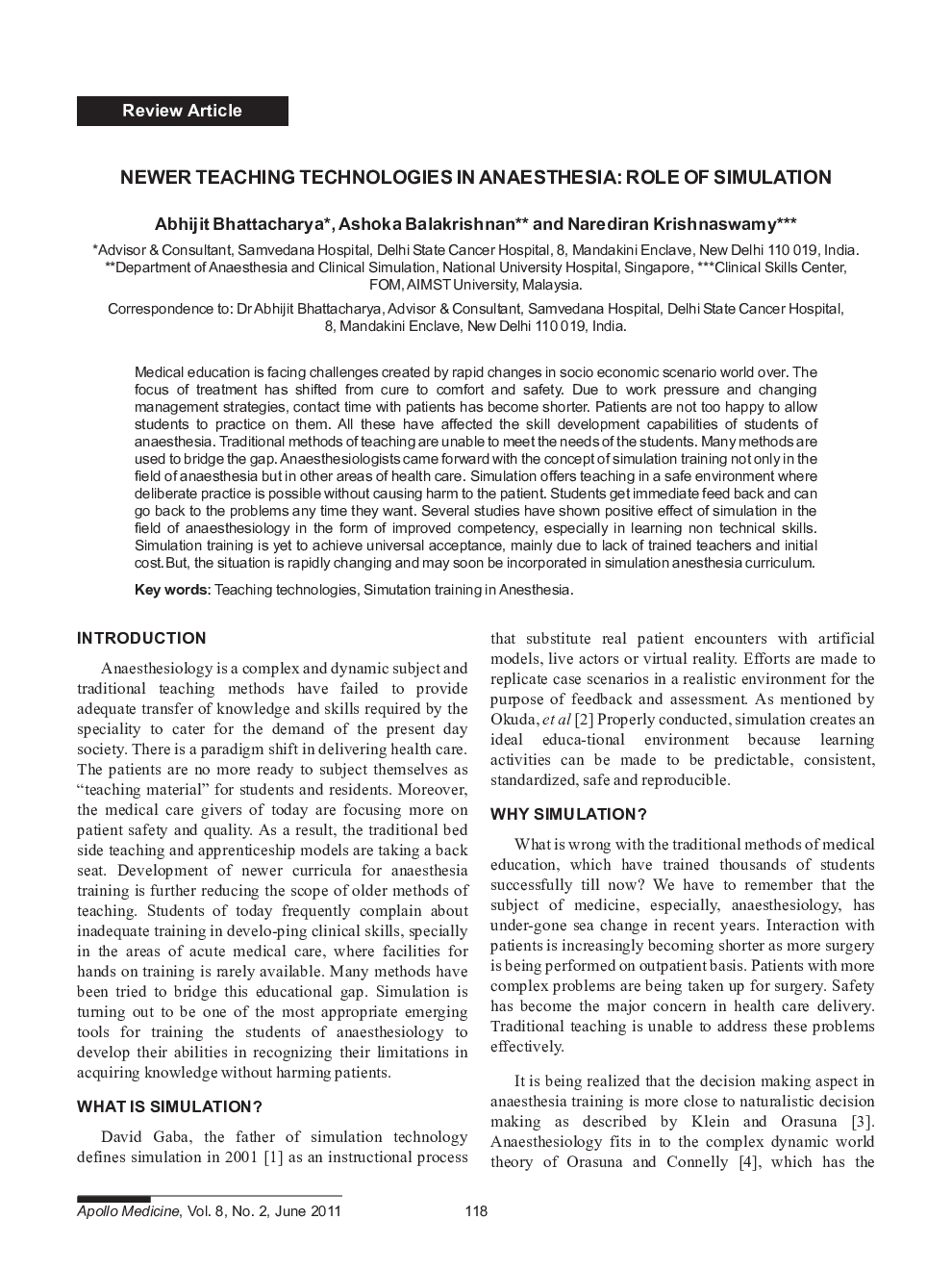| Article ID | Journal | Published Year | Pages | File Type |
|---|---|---|---|---|
| 3235487 | Apollo Medicine | 2011 | 8 Pages |
Medical education is facing challenges created by rapid changes in socio economic scenario world over. The focus of treatment has shifted from cure to comfort and safety. Due to work pressure and changing management strategies, contact time with patients has become shorter. Patients are not too happy to allow students to practice on them. All these have affected the skill development capabilities of students of anaesthesia. Traditional methods of teaching are unable to meet the needs of the students. Many methods are used to bridge the gap. Anaesthesiologists came forward with the concept of simulation training not only in the field of anaesthesia but in other areas of health care. Simulation offers teaching in a safe environment where deliberate practice is possible without causing harm to the patient. Students get immediate feed back and can go back to the problems any time they want. Several studies have shown positive effect of simulation in the field of anaesthesiology in the form of improved competency, especially in learning non technical skills. Simulation training is yet to achieve universal acceptance, mainly due to lack of trained teachers and initial cost. But, the situation is rapidly changing and may soon be incorporated in simulation anesthesia curriculum.
